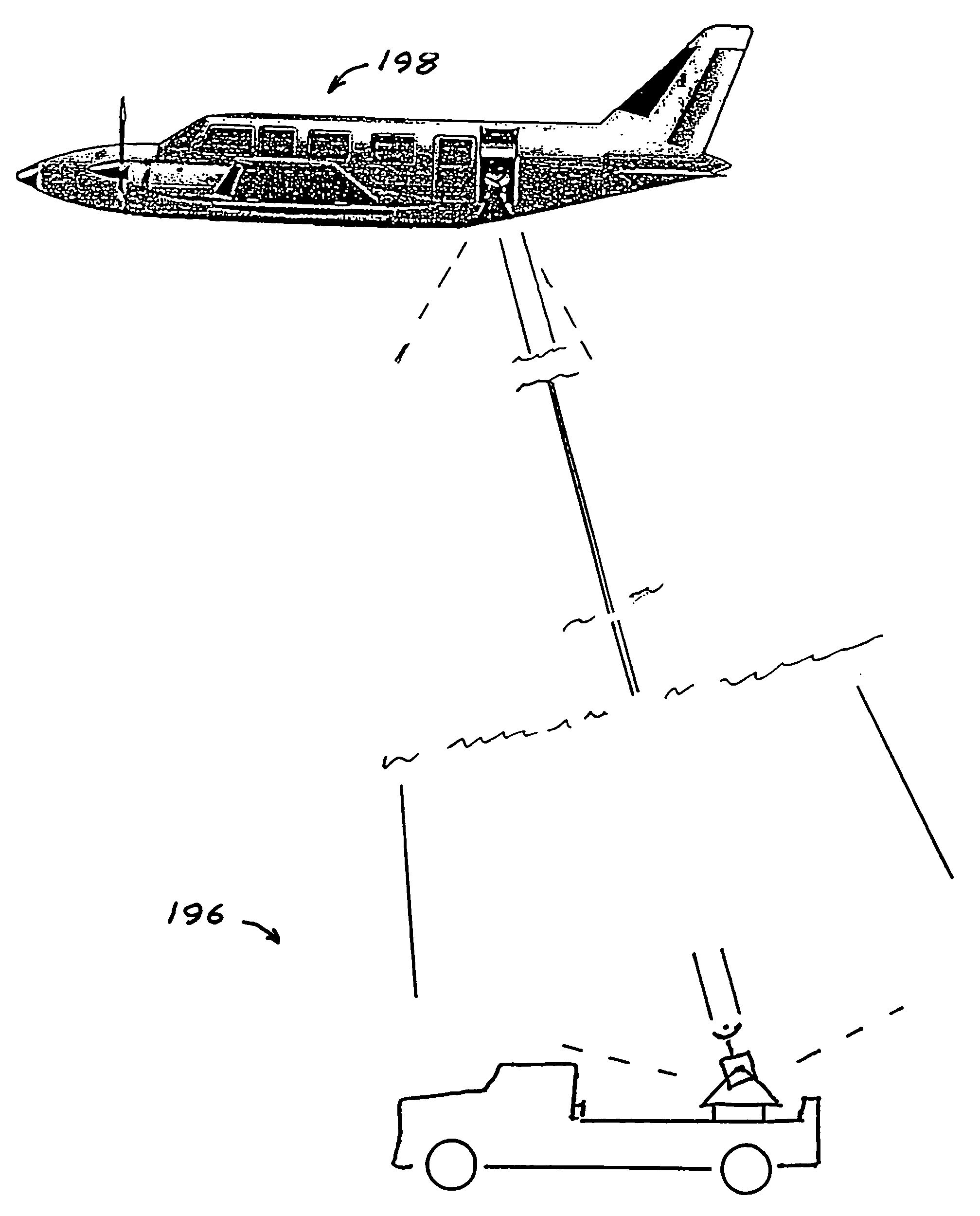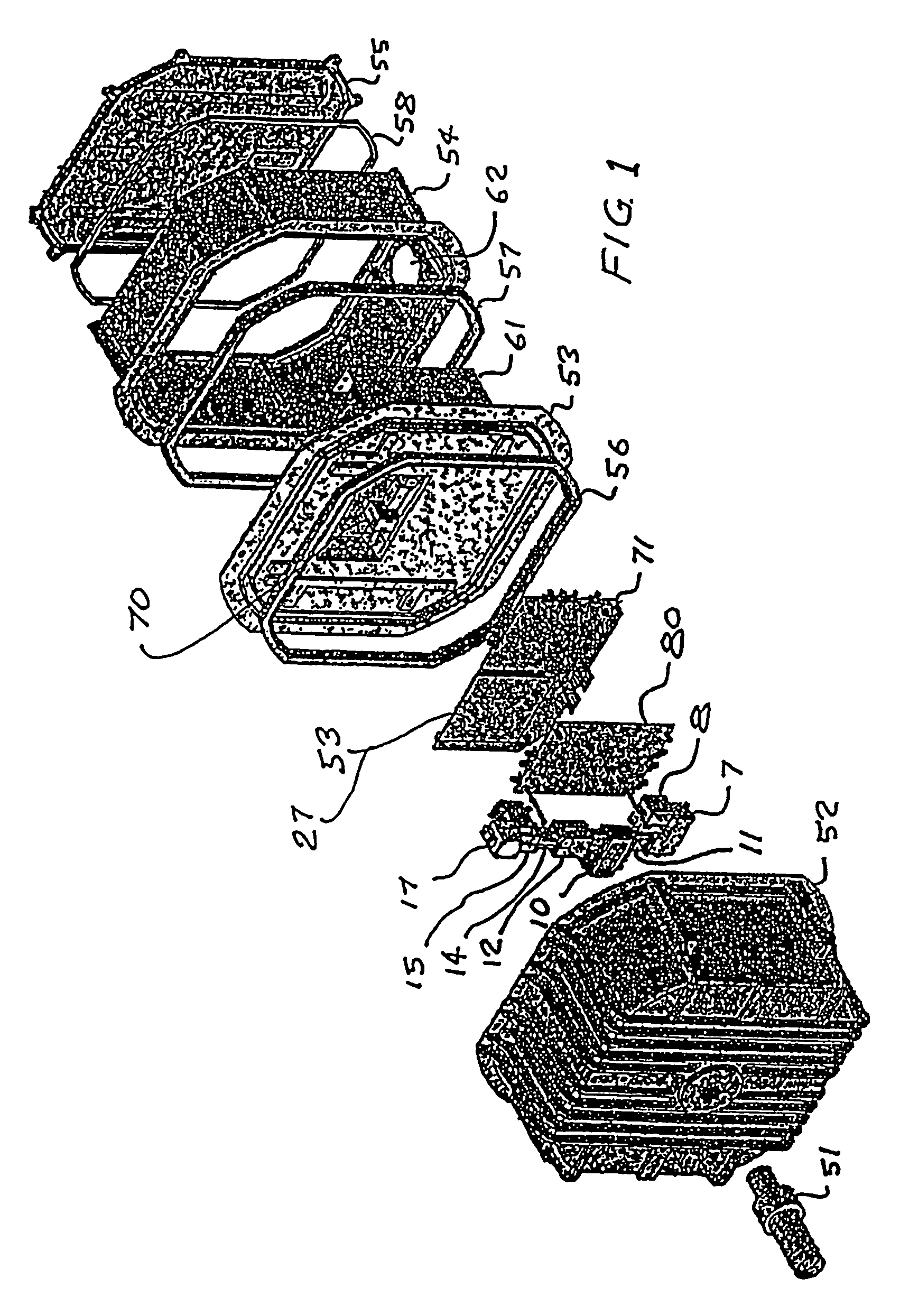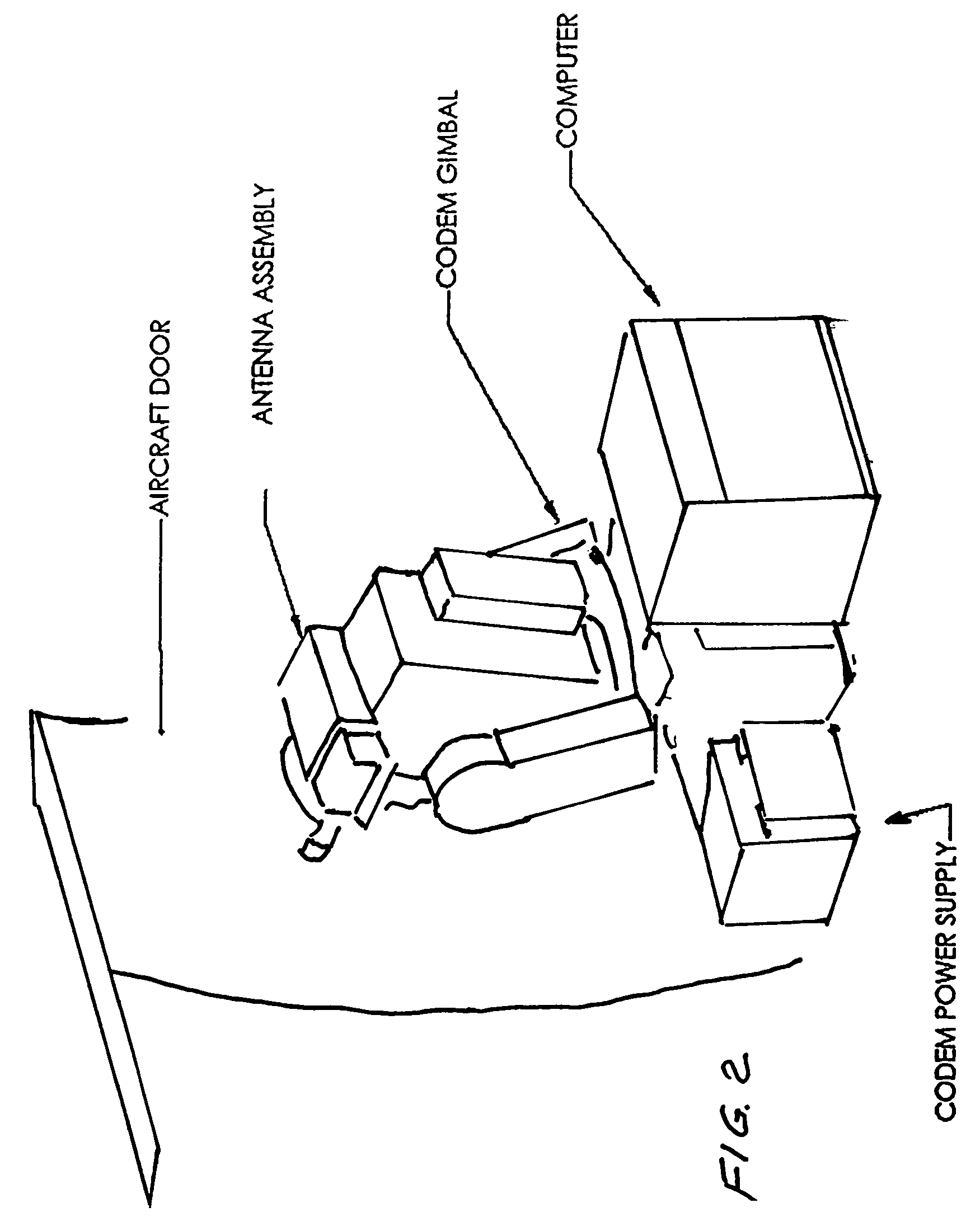Mobile millimeter wave communication link
a technology of millimeter wave and communication link, which is applied in the direction of transmission monitoring, wireless commuication services, substation equipment, etc., can solve the problems of high inability to justify the cost and long construction period of fiber optic trunk lin
- Summary
- Abstract
- Description
- Claims
- Application Information
AI Technical Summary
Benefits of technology
Problems solved by technology
Method used
Image
Examples
Embodiment Construction
[0044]First Preferred Embodiment Mobile Air to Stationary Ground Platform Important antenna pointing features of a first preferred embodiment of the present invention are shown in FIGS. 2 and 3 and 5 through 8. This embodiment represents a prototype demonstration carried out by Applicants to prove many of the advantages of the present invention. It is a mobile-to-stationary link, specifically a mobile aircraft station 198 to stationary ground station 196 as shown in FIG. 3. A view of the aircraft gimbaled transceiver looking out the aircraft window is in FIG. 2. The main components of the gimbaled aircraft transceiver are shown in the FIG. 5 block diagram and the main components of the gimbaled ground transceiver are shown in FIG. 6. The aircraft is a Piper Navajo PA31-350 and the regular luggage door was replaced with a door fabricated from Plexiglas that is about 90 percent transparent to millimeter wave radiation. The aircraft transceiver system 200 (FIG. 5) includes a 12 inch an...
PUM
 Login to View More
Login to View More Abstract
Description
Claims
Application Information
 Login to View More
Login to View More - R&D
- Intellectual Property
- Life Sciences
- Materials
- Tech Scout
- Unparalleled Data Quality
- Higher Quality Content
- 60% Fewer Hallucinations
Browse by: Latest US Patents, China's latest patents, Technical Efficacy Thesaurus, Application Domain, Technology Topic, Popular Technical Reports.
© 2025 PatSnap. All rights reserved.Legal|Privacy policy|Modern Slavery Act Transparency Statement|Sitemap|About US| Contact US: help@patsnap.com



